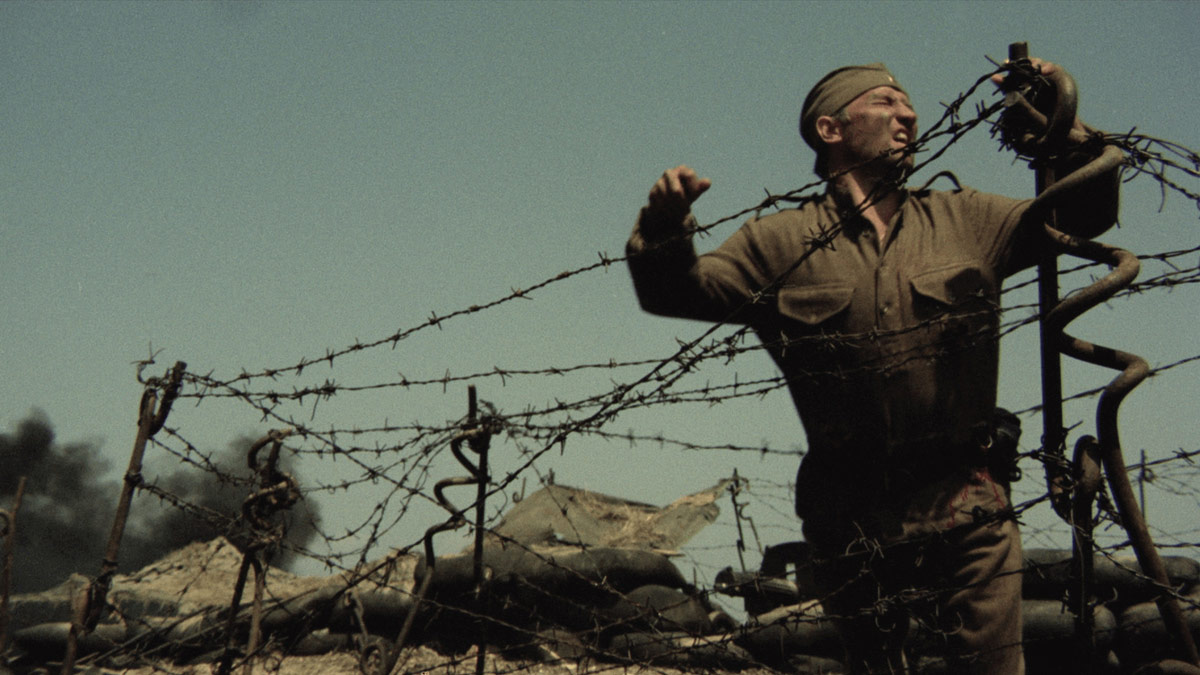
(c) 1977 Rapid Film GMBH - Terra Filmkunst Gmbh - STUDIOCANAL FILMS Ltd
``The Cross of Iron'' A mysterious work born between madness and chaos. This epic war story from a master of violence is filled with the harsh and vivid reality of the shooting scene! ?
2017.09.01
Filming in Yugoslavia was a huge mess
This epic war film is set on the Eastern Front of World War II and depicts the Inferno chaos from the perspective of Sergeant Steiner (James Coburn), a veteran soldier on the side of Nazi Germany. The opening scene of bombing after bombing is truly spectacular, with no time to breathe. Dust rises and soldiers' bodies are blown into the air, with fast editing and Peckinpah's signature slow motion. Unlike today, in this age when CG and other techniques can no longer be used to disguise things, the explosions engraved on the film are endlessly real and filled with indescribable horror.
However, this endless supply of gunpowder does not guarantee a large production budget. In reality, the film was in dire straits, and a riot was on the verge of breaking out over lack of funds. The film set, where hopeless despair and madness that had forgotten humanity swirled, was in a state of chaos that exceeded that of any of Peckinpah's previous works. It must have been a state of "Inferno with the camera rolling, and Inferno with the camera stopped."
Peckinpah had been known to clash with producers in the past, but this time was no different. The producer, who had boasted that he would "provide everything you need!", stumbled over fundraising, and the trust between him and the staff and actors was in the abyss. Moreover, the people who were called to the filming location in Yugoslavia spoke different languages, and it was difficult to communicate with each other.
Of the 20 tanks promised, only three arrived. Even on the first day of filming, the equipment hadn't arrived, leaving everyone stunned and waiting. On top of that, there were only five stuntmen, and when they were close up on the verge of death, they were quickly made to look like different people with makeup, and they were rotated several times to perform endless, enormous action scenes. Furthermore, the costumes prepared by the local staff were unusable at the level of a school play, so they had to rush to prepare hundreds of thousands of costumes for 300 extras.
Filming came to a complete halt whenever funds ran out. The staff and cast demanded payment, asking, "Hey, what's going on?!" On top of that, Peckinpah himself was suffering from alcohol and drugs, and a medical examination revealed that he had a weak heart.
These are just a few examples. It was a terrible situation. But what I want to talk about is not how bad it was, but rather the "results" that were achieved by overcoming it. Despite the violent conflicts that Peckinpah had with the producer every time they met, he managed to bring the situation under control, united the staff, and fought desperately to the end to cross this hopeless bridge. And he created a masterpiece that seemed to have swallowed up even this chaos. It may be that he could no longer back out, but looking at the results alone, his tenacity and sense of responsibility show the awesomeness of a sergeant leading a division.

